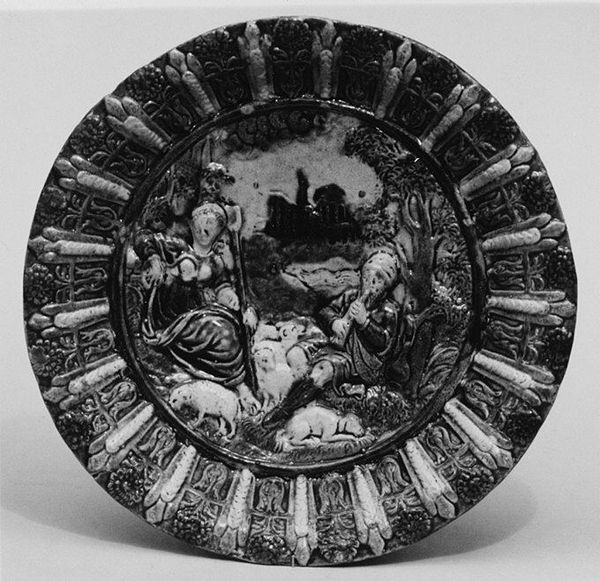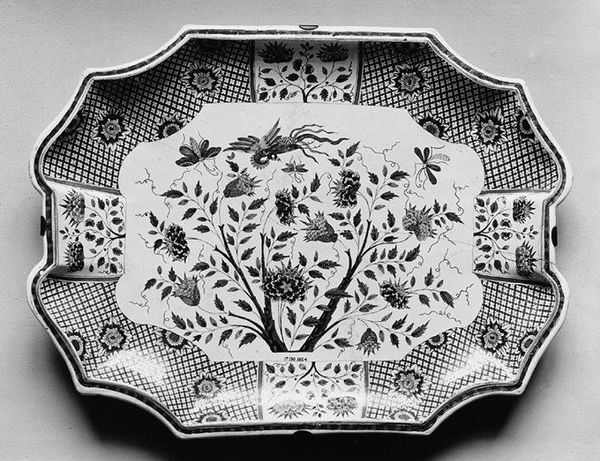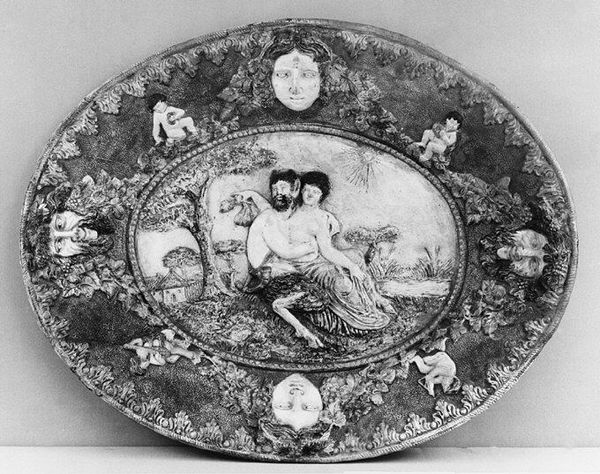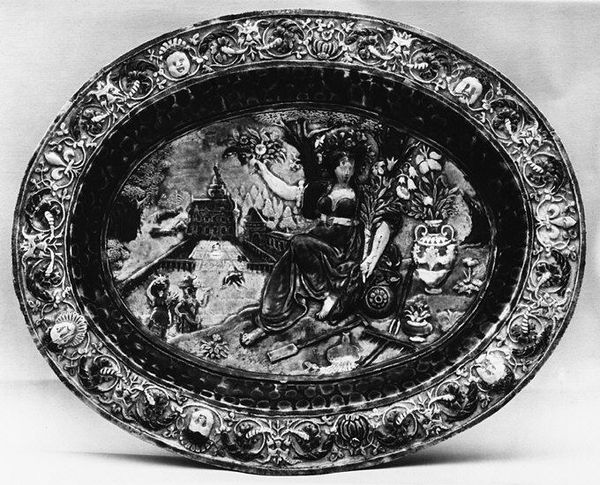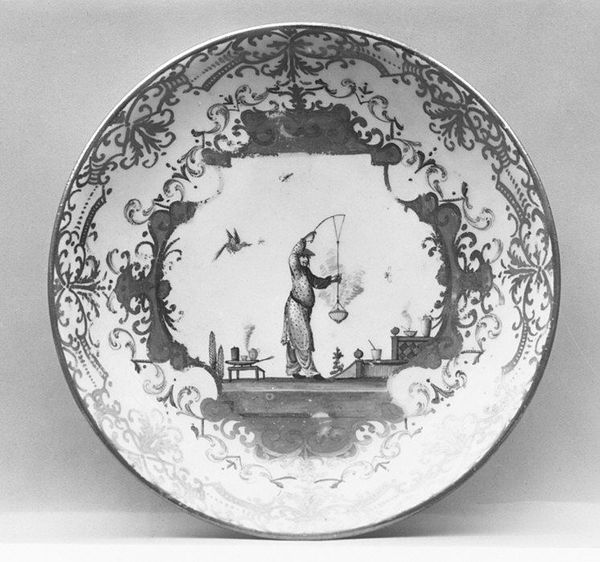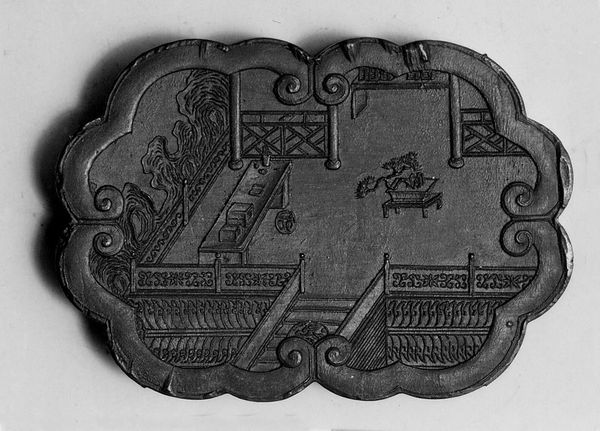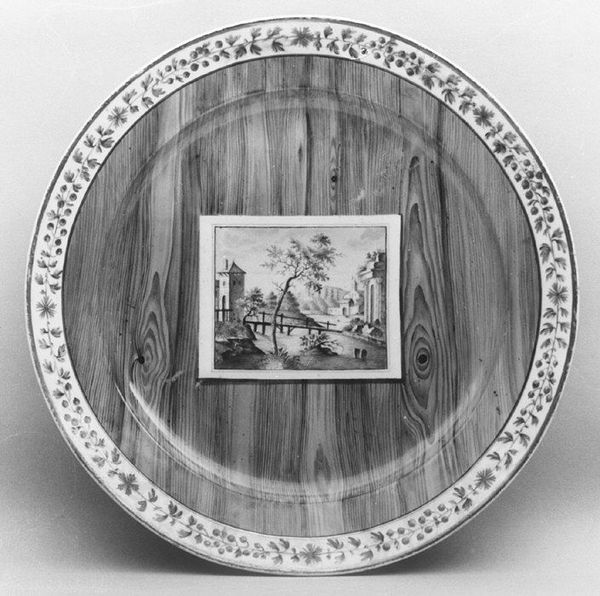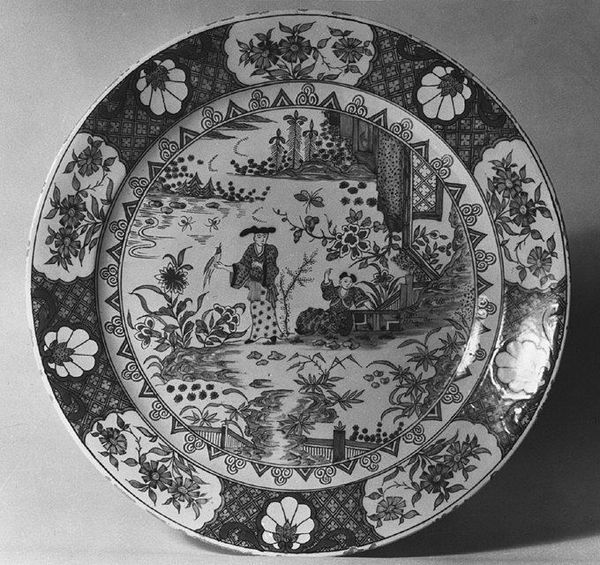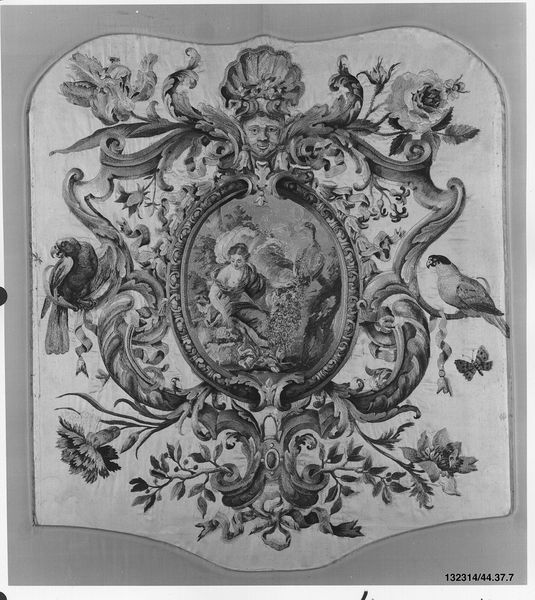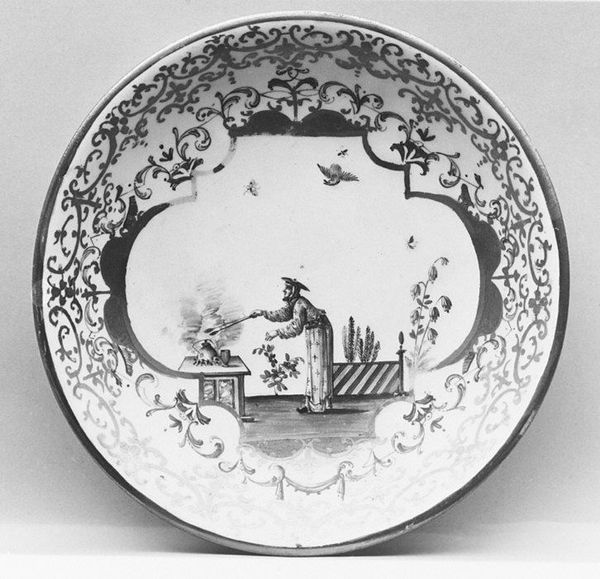
ceramic, sculpture
#
baroque
#
ceramic
#
female-nude
#
intimism
#
sculpture
#
genre-painting
#
decorative-art
#
rococo
Dimensions: Overall: 7 × 10 3/8 in. (17.8 × 26.4 cm)
Copyright: Public Domain
Curator: Here we have an oval plaque created between 1730 and 1740 by Jean-Baptiste Guillibaud. It’s a testament to the Rococo era's decorative arts and is currently held in the Metropolitan Museum of Art. Editor: My first impression is of incredibly delicate linework. The black and white palette adds a crispness to the otherwise elaborate composition, doesn't it? Curator: It certainly does. This piece encapsulates the aristocratic sensibilities of its time. Note how genre painting meets the female nude – a fashionable pursuit within courtly circles during the Rococo period. Think of it reflecting specific power dynamics! Editor: The composition, however, is really arresting. The central vignette enclosed in a circular frame with a seated woman surrounded by decorative motifs… there is so much packed into the picture plane. And is that mother-child figure reflected in a mirror? It brings up some compelling questions about image construction! Curator: Indeed. The piece speaks volumes about 18th-century French society. Guillibaud captures an atmosphere that thrived on refinement, sensuality and artistic innovation, influenced by salons and wealthy patrons. Editor: True, yet there's something intrinsically playful in how he arranges the botanical motifs. Notice the curvilinear shapes and flourishes of the Rococo, almost dancing around the primary figure. Curator: The choice of ceramic as a medium for what is essentially a sculptural object contributes further meaning. This suggests a movement away from more ostentatious materials towards art objects that served both functional and aesthetic purposes in private aristocratic homes. Editor: I am especially drawn to the contrasts the artist is making between public display and private interiority; and it feels really present as you move across the visual space. It provides much food for thought. Curator: This plaque is evidence that artistic innovation can be about the most delicate brushstrokes used for social documentation. I feel that offers today's viewer an invaluable connection to the social attitudes and power structures of its time. Editor: And the delicate balance the artist creates using form, theme, and presentation adds even more compelling nuances to understanding image construction during this period.
Comments
No comments
Be the first to comment and join the conversation on the ultimate creative platform.


